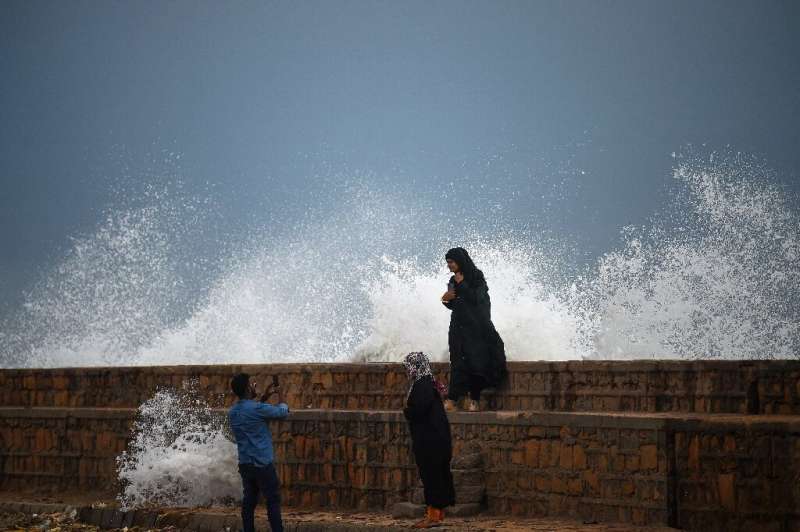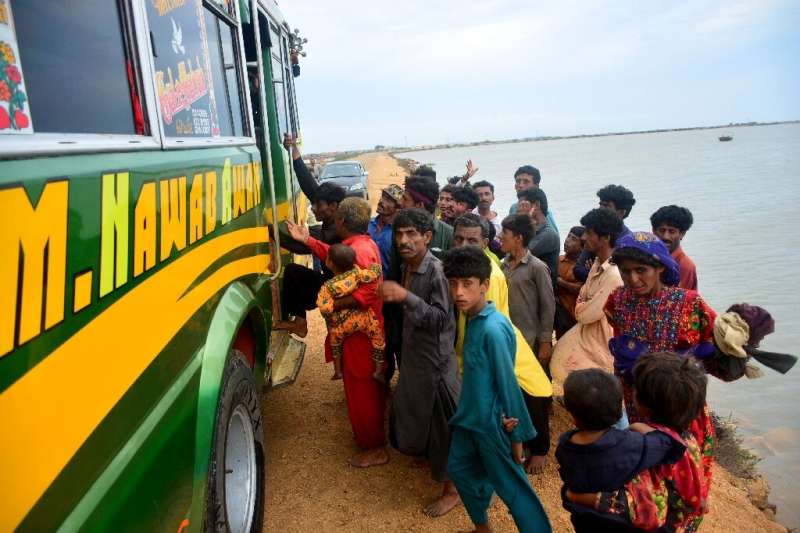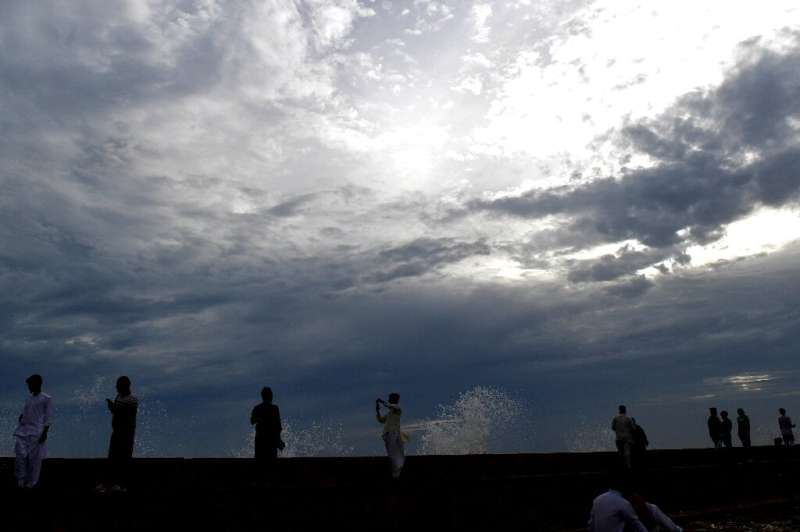This article has been reviewed according to Science X's editorial process and policies. Editors have highlighted the following attributes while ensuring the content's credibility:
fact-checked
reputable news agency
proofread
Over 100,000 evacuated as cyclone threatens India, Pakistan

More than 100,000 people had been evacuated in India and Pakistan ahead of the expected landfall Thursday of a fierce cyclone which could devastate homes and tear down power lines.
Biparjoy, a cyclone whose name means "disaster" in Bengali, is making its way across the Arabian Sea and is expected to make landfall as a "very severe cyclonic storm" on Thursday evening, government weather monitors said.
Powerful winds, storm surges and lashing rains were forecast to hammer a 325-kilometer (200-mile) stretch of coast between Mandvi in India's Gujarat state and Karachi in Pakistan.
India's Meteorological Department predicted the storm would hit near the Indian port of Jakhau late Thursday, warning of "total destruction" of traditional mud and straw thatched homes.
At the usually bustling Jakhau port, howling wind battered more than 30 large fishing boats dragged up out of the water onto the shore, as dozens of stray dogs roamed around the port's entrance.
At sea, winds were already gusting at speeds up to 180 kilometers per hour (112 miles per hour) by Wednesday, forecasters said.
Wind speeds are predicted to reach 125-135 km/h, with gusts of up to 150 km/h, by the time it makes landfall.
"Over 47,000 people have been evacuated from coastal and low-lying areas to shelter," said C.C. Patel, an official in charge of relief operations in Gujarat.
India's meteorologists warned of the potential for "widespread damage," including the destruction of crops, "bending or uprooting of power and communication poles" and disruption of railways and roads.

'High to phenomenal'
Pakistan's climate change minister Sherry Rehman said Wednesday that 62,000 people had been evacuated from the country's southeastern coast, with 75 relief camps set up at schools and colleges.
She said fishermen had been warned to stay off the water and small aircraft were grounded, while flooding was possible in the megacity of Karachi, home to about 20 million people.
"We are following a policy of caution rather than wait and see," she told reporters in Islamabad. "Our first priority is saving lives."
The Pakistan Meteorological Department forecast gusts of up to 140 km/h in the southeastern province of Sindh, accompanied by a storm surge reaching 3.5 meters (11.5 feet).
Evacuees gathered at a temporary shelter at a school in Sindh's Badin district.
Wilayat Bibi worried her fishing family would be doomed even after the storm passes.
"Our concern is when the cyclone is over, how will we feed our children?" the 80-year-old asked.
"If our boats are gone, if our huts are also gone—we will be languishing with no resources," she said.

Fishing has also been suspended along India's Gujarat coast, with conditions expected to escalate from "rough to very rough" on Wednesday, to "high to phenomenal".
A short distance from Jakhau port, some 200 Kutch tribal people from nearby Ashiravandh village sat on the floor at a single-storey local health center that had been converted into a cyclone shelter.
As night fell, men brewed tea on a kerosene stove in a corner while women, all in traditional dress, rocked their babies to sleep in wooden cradles as driving rain lashed the concrete walls of the center.
Many were worried about their farm animals, which they had left behind.
Dhal Jetheeben Ladhaji, a pharmacist at the health center, said 10 men had stayed behind to look after hundreds of cattle crucial to their village's livelihood.
"We are terrified, we don't know what will happen next," Ladhaji, 40, told AFP.
"We are praying to God that the cyclone does not come, and that these people who are staying in the shelter can go back to their homes with smiles on their faces."
Cyclones—the equivalent of hurricanes in the North Atlantic or typhoons in the Northwest Pacific—are a regular and deadly menace on the coast of the northern Indian Ocean, where tens of millions of people live.
Scientists have warned that storms are becoming more powerful as the world gets warmer with climate change.
Roxy Mathew Koll, a climate researcher at the Indian Institute of Tropical Meteorology, said cyclones derive their energy from warm waters, and that surface temperatures in the Arabian Sea were 1.2 to 1.4 degrees Celsius warmer than four decades ago.
© 2023 AFP

















